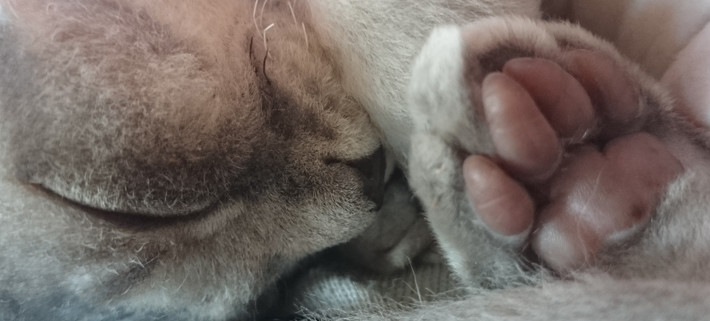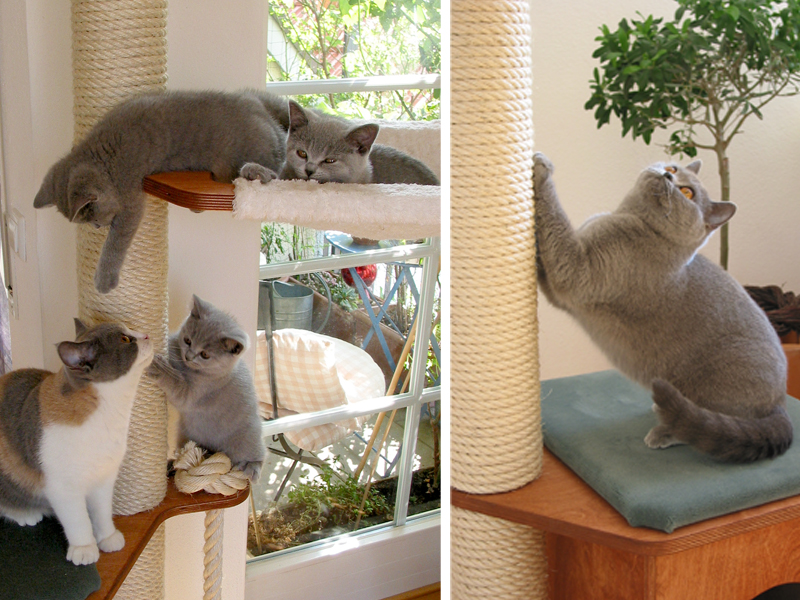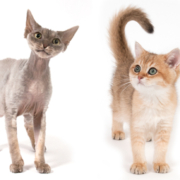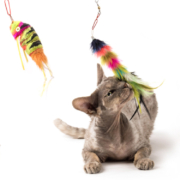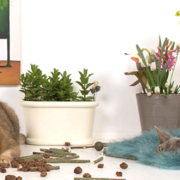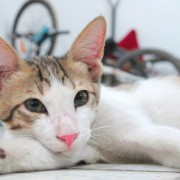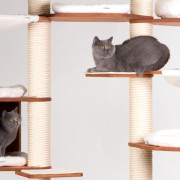Advice on scratching trees – why do cats like scratching?
Why do cats like scratching – and why is it important to have a scratching tree?
Scratching and clawing are innate to cats – and as a result, a scratching post is a basic requirement for every house that is home to cats.
Looking after their claws and scratching are some of the basic innate instincts that every cat possesses. No matter if the cat is a wild cat, an outdoor cat or an indoor cat: the same applies. They all know instinctively from birth that they have to look after their claws because sharp, well-groomed claws play an important role in a cat’s life. Claws are used in play, climbing and defence.
Cleaning claws and innate cat behaviour
It is understandable why cats spend as much time maintaining their claws as looking after their coats.
They use scratching to sharpen the claws on their front paws into tip-top shape.
They use their teeth to gnaw on the claws on their back paws and lick them with their tongue to keep them in perfect condition.
Scratching and sharpening their claws cleans them of dirt and strips them of old claw casings. Scratching is not just an innate part of a cat’s personal hygiene routine – it is also instinctive behaviour used to mark territory. Cats are territorial animals. They mostly mark their territory (where they live, such as a garden or apartment) through scratching. Firstly, the scratch marks themselves are a visible marker, and secondly, the glands in the balls of the feet give off a scent that cats can smell.
So, scratching and sharpening their claws comprise part of a cat’s personal hygiene routine, a form of instinctive territorial behaviour, and a method of social communication with other felines.
The scratching instinct and the instinct to mark out territory are present in all cats – even in cats that live alone, that don’t hunt, or that don’t have to defend themselves.
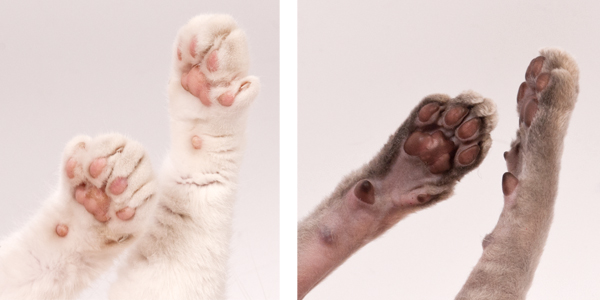 Paws in pictures: left – British Shorthair cat Izzy, right – Devon Rex cat Boris
Paws in pictures: left – British Shorthair cat Izzy, right – Devon Rex cat Boris
Where is a cat allowed to scratch – and where is a cat not allowed to scratch?
When humans and cats live together, there are often disputes about where a cat is allowed to scratch – and where not.
Please do not ever try to stop your cat scratching completely. Your cat is just following its innate instinct. Scratching helps your cat stay physically and mentally healthy – and can be used to reduce stress and deal with displacement activity.
My advice!
A good tip is to start providing your cat with a good-quality, interesting (in a cat’s eyes!) scratching tree from a young age. Long poles wrapped in sisal are attractive to cats – and even a young cat will quickly get used to scratching the post, leaving your furniture and armchairs unscathed.
It is important to get cats used to the scratching tree when they are still very young: this means they will take on board the scratching behaviour you want.
When cats are older, it is more difficult to dissuade them from “the sin of scratching”, and they need a lot of time, patience and reinforcement.
Regardless of all these points, a scratching tree also helps your cat keep fit. Your kitty-cat can climb, scratch and play to its heart’s content – and cosy flat surfaces and hammocks to lie on invite your cat to nap and relax.
You might also be interested in: Tips for your scratching tree – why it is so important to pick the right location!

